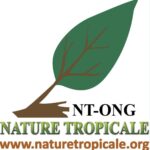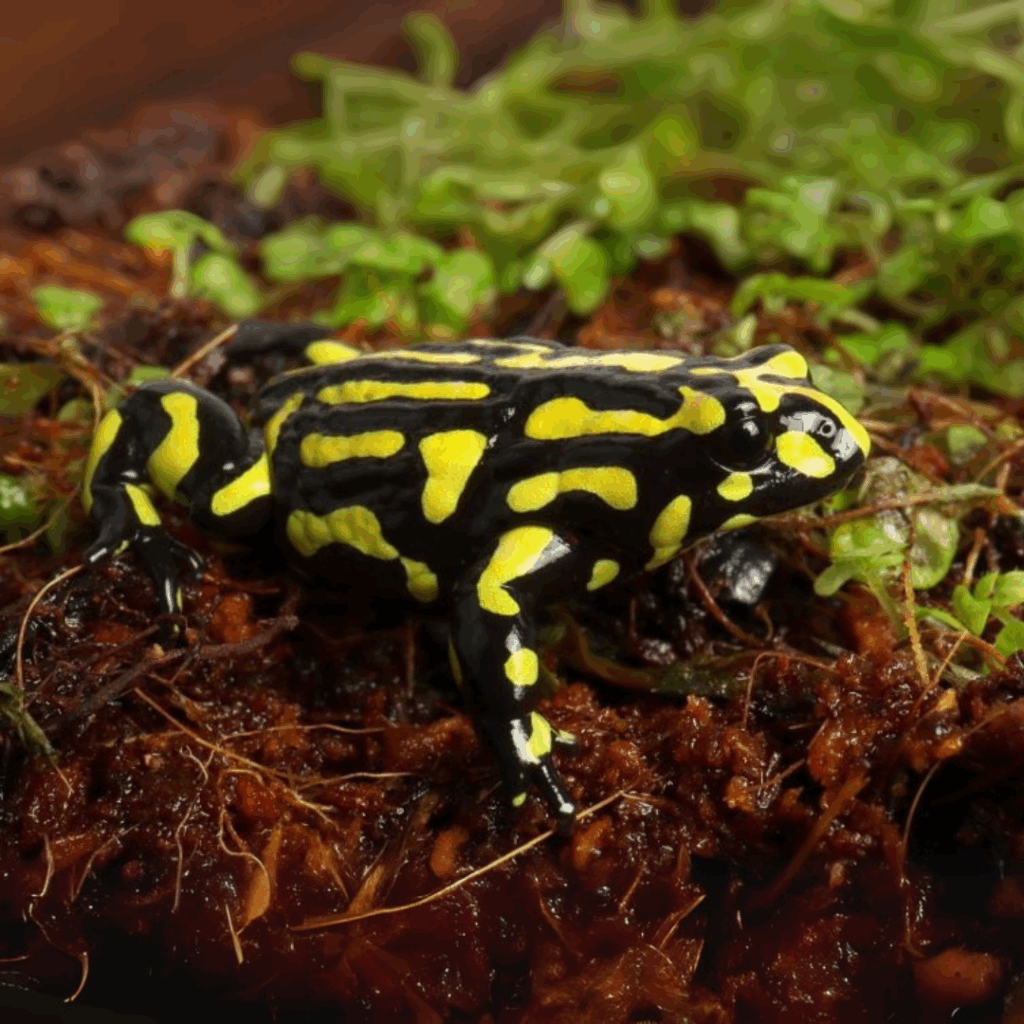Safeguard
Nature's Integrity
Pause genetically engineered
wildlife releases
On 15 October 2025, the IUCN Congress voted on Motion 133 calling for a “precautionary deferment of the release of genetically engineered wild organisms into natural ecosystems”. The motion was defeated by a very tight margin.
We thank all members who supported this important call for precaution.
A new push to engineer nature
Biodiversity is declining globally at rates unprecedented in human history – and the rate of species extinction is accelerating. This loss is a direct result of human activity. We are eroding the very foundations of life on Earth, including humanity’s own existence.
At the same time, more and more proposals are being made to genetically engineer nature itself – not only domesticated crops and livestock, but wild species within complex ecosystems.
Proposals range from eradicating mosquito populations and invasive species (such as mice, rabbits or snails), to making endangered animals disease-resistant or even ‘reviving’ extinct species (such as mammoth or dire wolf).
Most of these applications remain speculative. So far, none has proven successful. The risks, however, are clear.
Risks of genetically engineering nature
- Irreversible ecological impacts – Once released, genetically engineered organisms cannot be recalled. There is no “off-switch.” Their interactions with other species are unpredictable and could permanently damage already fragile ecosystems.
- Scientific uncertainty – We still know far too little about how wild species interact in nature to confidently “re-programme” them. Removing or altering one species may have cascading effects we cannot foresee.
- Inadequate regulation – Current biosafety frameworks were designed for domesticated species in agricultural settings. They are inadequate and insufficient for managing the ecological, ethical, and cross-border implications of genetically engineering nature. No effective mechanisms for international liability and redress exist.
- Violation of Indigenous Peoples’ and Local Communities’ rights – Genetic engineering of nature risks marginalising Indigenous Peoples’ and Local Communities’ (IPLCs) worldviews and conservation practices, undermining their sovereignty and ecological stewardship. It might disrupt the deep relationships IPLCs maintain with sacred beings, kin, and culturally significant species.
A paradigm shift in nature conservation
The use of genetic engineering in conservation would mark a profound departure from established principles. Rather than safeguarding nature for its intrinsic value, conservation could shift toward redesigning nature to fit human preferences.
While often described as simply another “tool in the toolbox”, the use of genetic engineering in nature conservation represents a paradigm shift whose ecological and ethical implications demand careful consideration.
A responsible path forward
Responsible innovation requires pause, precaution, and inclusive public debate.
No intentional environmental release of genetically engineered wild species – including experimental releases – should take place until
- Science can provide the answers needed to predict outcomes;
- Robust regulations are in place to prevent harm;
- Safeguards are established to respect, preserve, and maintain the knowledge, innovations, and practices of Indigenous Peoples and Local Communities (IPLCs); and
- Broad societal consensus has been achieved on whether – and under what conditions – the boundary between protecting and re-engineering nature may be crossed.
A moratorium is a legitimate and internationally recognised strategy for addressing technologies that carry irreversible environmental risks. It is also a well-established policy instrument of the International Union for Conservation of Nature (IUCN):
2004: Moratorium on further environmental releases of GMOs,
2012: Moratorium on the fishing of the Chilean jack mackerel in the South Pacific,
2019: Moratorium on projects impacting the Critically Endangered Tapanuli orangutan,
2021: Moratorium on deep-sea mining.
This moratorium will allow time to advance scientific understanding, foster broad and inclusive societal debate, and implement strong safeguards before any environmental releases occur. In light of the serious and wide-ranging risks of genetically engineering nature, it offers the best way to uphold IUCN’s commitment to the intrinsic value of biodiversity, the Precautionary Principle, and the recognition of IPLCs.
Support Motion 133 on a moratorium on genetically engineering wild species in natural ecosystems
More than 90 NGOS from around the world support the call for a moratorium
From Malaysia to Togo to Colombia - these NGOs have signed
AGROLINK Association — Bulgaria
Alianza Biodiversidad — América Latina
Alianza Continental por la Soberanía Alimentaria de los Pueblos LAC — Paraguay
Alliance to Save Hinchinbrook Inc. — New Zealand
Ambiente En Lucha — Argentina
Amigos de la Tierra Argentina — Argentina
Apimondia — International
Asamblea de la Comunidad Costera de Tierra del Fuego, Antártida e Islas del Atlántico Sur — Argentina
Asamblea de los pueblos Indigenas por la Soberania Alimentaria — Mexico
Asamblea Popular por el Agua — Argentina
Asociación Agroecológica Nuevas Raices – AGROECONUR — Colombia
Asociaciòn argentino uruguaya de economìa ecològica — Argentina
Aurelia Stiftung — Germany
BeeLife European Beekeeping Coordination — Europe
Beyond GM — UK
Bolivia Libre de Transgénicos — Bolivia
Canadian Biotechnology Action Network — Canada
Cátedra Libre de fauna silvestre Facultad de Ciencias Veterinarias, Universidad Nacional de Rosario — Argentina
Cátedra Libre de Soberanía Alimentaria Nutrición UBA — Argentina
CEMIAC — México
Centro de Estudios HEÑÓI — Paraguay
Centro de Estudios sobre Tecnologías Apropiadas de Argentina — Argentina
Coalition de Veille sur les Activités Biotechnologiques au Burkina — Burkina Faso
Coalition pour la Protection du Patrimoine Génétique Africain — Côte d’Ivoire
Colectivo agroecologico Las Gurisas — Uruguay
ConCiencia Agroecológica 9 de Julio — Argentina
Conservation Council WA — Australia
Consumers’ Association of Penang — Malaysia
Consumidores Conscientes — Bolivia
Coop. Tierra de Maíz — Nicaragua
Corporate Europe Observatory — Europe
Critical Scientists Switzerland — Switzerland
Deutscher Imkerbund — Germany
Econexus — International
Ecoropa — Europe
Ekō — International
Escuela de educación sindical y popular Raul Eduardo Mahecha — Colombia
ETC Group — International
Ethics in Action working group of the IUCN French Committee — France
European Network of Scientists for Social and Environmental Responsibility (ENSSER) — Europe
FIAN Burkina — Burkina Faso
Friends of the Earth Australia — Australia
Friends of the Earth US — USA
Fundación sentir agroecológica — Colombia
GE Free New Zealand in Food and Environment — New Zealand
GeneEthics — Australia
GM Freeze — UK
GMWatch — UK
GRAIN — Burkina Faso
Green Balkans NGO — Bulgaria
Hands Off Mother Earth Alliance — International
IG Saatgut — Germany
INAFCI — Argentina
Institute for Nature Conservation in Albania — Albania
Jeunes Volontaires pour l’Environnement — Togo
Koala Action Inc. — Australia
La Huerta Feliz – Colectivo SAS — Bolivia
LA PAZ VEGAN — Bolivia
Laicrimpo Salud — Argentina
Marcha Mundial das Mulheres — Brasil
Miljøbevægelsen NOAH — Denmark
MNCI Somos Tierra-CLOC-Via Campesina — Argentina
Movimento pela Saúde dos Povos – Health People’s Movement — Brasil
Movimiento Agroecológico Boliviano — Bolivia
Movimiento Agroecológico de América Latina y el Caribe — México
Movimiento de la Juventud Kuna — Panamá
Movimiento Nacional de Salud LAICRIMPO — Argentina
Mujeres, Cuerpos y Territorios (Mucyt) — Venezuela
Museo del Hambre — Argentina
Observatorio de Conflictos Ambientales – UNAL Colombia — Colombia
OGM dangers — France
Red de Abogadas y Abogados por la Soberanía Alimentaria (REDASA) — América Latina
Red de Agroecología de Nariño — Colombia
Red de Cátedras Libres de Soberanía Alimentaria y Colectivos afines — Argentina
Red de Guardianes de semillas de vida — Colombia
Sahabat Alam Malaysia — Malaysia
Save Our Seeds — Germany
Sena — Colombia
Slow Food — International
Sustainability Council of New Zealand — New Zealand
SWISSAID Colombia — Colombia
Terra! — Italy
Terre à Vie — Burkina Faso
The Bioscience Resource Project — USA
Third World Network — Malaysia
Unal — Mexico
Unión de Científicxs Comprometidxs con la Sociedad y la Naturaleza en América Latina (UCCSNAL) — América Latina
Union Resistente de Estudiantes Fueguinos Centro de estudiantes de la UNTDF — Argentina
Universidad Nacional de Colomboa — Colombia
UNL CONICET — Argentina
Yandeyari — Bolivia
Background
At the upcoming World Conservation Congress, taking place 9–15 October 2025 in Abu Dhabi, the International Union for Conservation of Nature (IUCN) will take a decision on IUCN Motion 133 – A moratorium on genetically engineering wild species in natural ecosystems.
This motion has been introduced by NGOs from around the world to safeguard nature’s integrity in the face of rising proposals to genetically engineer wild species in natural ecosystems.
Response to rapidly evolving technology
Motion 133 aims to protect nature by applying the Precautionary Principle to rapidly advancing genetic engineering technologies:
“Specifically, the motion introduces greater specificity and operational clarity regarding the application of the Precautionary Principle in the context of rapidly advancing genetic engineering technologies and their potential use in natural environments and responds to rapidly evolving technological developments not yet addressed in current policy frameworks.“
World Conservation Congress Preparatory Committee acting as Appeals Body
What is the Precautionary Principle?
The Precautionary Principle is a risk management strategy advocating for preventive action against potential harm. Under this principle, if an activity might harm the public or the environment and there is still no scientific agreement on the issue, the activity should not be carried out. The Convention on Biological Diversity states in its Preamble that, “Where there is a threat of significant reduction or loss of biological diversity, lack of full scientific certainty should not be used as a reason for postponing measures to avoid or minimize such a threat.”
From genetic engineering to synthetic biology
Capabilities of genetic engineering technology have radically expanded in recent years. Latest advances allow engineers to create organisms and biological elements that are
- radically different from those occurring in nature (“new-to-nature”),
- perpetuate genetic engineering processes outside the laboratory (“outdoor genetic engineering”), and
- engineer or wipe out entire populations of wild species (“gene drives”).
The convergence of genetic engineering technologies with generative artificial intelligence has opened the door to so-called generative biology or machine-driven biodesign, by which AI models, trained with large amounts of biological data and equipped with enormous data processing power, generate new genetic (DNA/RNA) and protein (amino acid) sequences.
Given today’s fragmented regulatory framework, synthetic organisms, microorganisms or genetic elements could be released without adequate oversight, potentially disrupting ecosystems, harming human health, and undermining socio-economic and cultural rights.
What is synthetic biology?
The term synthetic biology refers to biotechnologies that can engineer, redesign, or synthesize biological systems – including organisms. It blurs distinctions between older genetic engineering methods and newer approaches such as genome editing. The Convention on Biological Diversity defines it as “a further development and new dimension of modern biotechnology that combines science, technology and engineering to facilitate and accelerate the understanding, design, redesign, manufacture and/or modification of genetic materials, living organisms and biological systems” (Decision XIII/17).
IUCN responses to these developments
The IUCN has been debating its approach to synthetic biology – the latest manifestation of genetic engineering – for several years.
In 2016, at the IUCN Congress in Hawai‘i, members called for an assessment of synthetic biology, along with recommendations for IUCN’s approach. They also asked for an urgent review of gene drives and opposed any research or field trials until that review is completed (Resolution 086).
What are gene drives?
Engineered gene drives aim to bias inheritance so an engineered trait, such as sterility or sex-ratio bias, spreads rapidly through a population. Their potential to permanently alter entire species and ecosystems raises significant concerns for biodiversity and the integrity of IPLC’s cultures, traditions and territories. Gene drives have been proposed to eradicate invasive rodents on islands and to suppress populations of Anopheles gambiae mosquitoes which can transmit malaria. First environmental releases are planned before 2030.
An IUCN assessment, Genetic frontiers for conservation, was published in 2019. The report was criticised both by NGOs – including IUCN member organisations – and scientists as an insufficient basis for IUCN deliberations. In addition, a draft set of IUCN Principles on Synthetic Biology and Biodiversity Conservation was presented to the IUCN Congress in Marseille, which was postponed to 2021. The Principles included the option of moratoria:
“There could be situations in which moratoria on the environmental release of specific applications of synthetic biology (including engineered gene drives) are warranted. Specific guidance would be required regarding what data and other information are needed to determine if or when a moratorium might be introduced, how a moratorium would be implemented, and how a moratorium on a particular application could be removed.”
Principles on Synthetic Biology and Biodiversity Conservation, draft version of December 2019
In 2021, at the IUCN Congress in Marseille, members did not adopt the Principles but called for an “inclusive and participatory process” to develop an IUCN policy on the “use of synthetic biology in nature conservation” to be adopted by the next Congress (Resolution 123). NGOs have denounced the policy development process for its lack of transparency, conflicts of interest and insufficient involvement of Indigenous Peoples and Local Communities (IPLCs).
In the lead up to the 2025 Congress, a draft IUCN policy on synthetic biology in relation to nature conservation has been proposed as part of Motion 087. The proposed policy fails to provide sufficient safeguards against negative and irreversible harm to nature. It requires significant improvement.
We urge IUCN members to endorse a moratorium on genetically engineering wild species, to protect biodiversity and the integrity of nature conservation. Such a pause is essential to:
- expand scientific knowledge,
- enable broad and inclusive public debate, and
- establish robust safeguards before any irreversible interventions occur.
Support Motion 133 on a moratorium on genetically engineering wild species in natural ecosystems
Q&A
What is the scope of the proposed IUCN moratorium?
The moratorium covers the intentional release into the environment of:
- Genetically engineered organisms of wild species — including gene drive organisms designed to spread engineered traits rapidly through wild populations, or genetically modified microbes released into soil or water.
- Novel genetic elements — entirely new DNA sequences not found in nature, such as synthetic promoters that control gene expression, or engineered metabolic pathways that enable production of specific substances
It does not apply to laboratory research or to contained experimental trials conducted under biosafety standards.
Research continues — what is paused are risky environmental releases, until proper safeguards are in place.
Why is Motion 087 insufficient on its own?
Lack of precaution: The policy groups together synthetic biology applications with very different risk profiles – from contained use of engineered bacteria in industrial settings to gene drives designed to eliminate entire wild populations. This blanket approach fails to establish necessary safeguards or “red lines” for high-risk applications that could cause irreversible harm to biodiversity.
Regulatory blind spots: The policy overlooks well-documented governance gaps, including the absence of a comprehensive international regulatory framework (IUCN briefing, 2024). It does not address the need for stronger national or global oversight.
Uncritical assumption of alignment with IUCN’s mission: The policy presumes all synthetic biology applications align with IUCN’s mission to protect nature’s integrity and diversity. However, the environmental release of genetically engineered wild species or novel genetic elements may directly conflict with that mission—and with IUCN’s commitments to intergenerational equity and the rights of Indigenous Peoples and Local Communities (IPLCs).
Departure from current IUCN policy: The policy departs from IUCN’s cautious stance in previous resolutions (Resolution 3.007 of 2004 calling for a moratorium on GMOs, Resolution 6.086 of 2016 advising against gene drive research).
Without Motion 133, IUCN risks endorsing technologies before it has the tools and consensus to manage them responsibly.
Isn’t the moratorium too late, since some environmental releases have already happened?
Yes, some genetically modified organisms – like insects and wild plants – have already been released in countries like Brazil, the US, and Malaysia.
However, it’s not too late for IUCN to take a stand. Precisely because some releases have already happened, it is even more urgent for IUCN to draw a clear line now. Most high-risk projects are still in development stages.
Motion 087 would implicitly endorse genetic engineering as a conservation tool. Motion 133 sends a clear signal of caution: these technologies must not be fast-tracked without strong safeguards, evidence, and consensus.
Find the responses to these and other questions in our dedicated Q&A page.
Resources
Here you can find some background materials on synthetic biology in relation to nature conservation:
Synthetic biology
A Bigger Conversation, 2022, Gene Editing and Conservation – the Unknown and the Unknowable.
Convention on Biological Biodiversity, 2024, Report of the multidisciplinary Ad Hoc Technical Expert Group on Synthetic Biology to Support the Process for Broad and Regular Horizon Scanning, Monitoring and Assessment.
GeneWatch UK, 2025, Chimera: The Genetic Modification of Nature, Briefing for the IUCN Congress in October 2025
German Federal Agency for Nature Conservation (BfN), 2022, Genetic engineering, nature conservation and biological diversity. Boundaries of design.
IUCN French Committee, 2024, The future of life. Our values for action.
Redford et al., 2019, Genetic frontiers for conservation: An assessment of synthetic biology and biodiversity conservation.
Sarah Agapito-Tenfen, 2022, Unintended Genomic Outcomes in Current and Next Generation GM Techniques: A Systematic Review
Save our Seeds, Pollinis, 2024, Synthetic Biology = Genetic Engineering of Wild Species
Gene drives
Austrian Environment Agency, 2019, Gene drive organisms. Implications for the environment and nature conservation.
Christophe Boëte, Gene drive: communication, hype, and the publics, Journal of Medical Entomology, Volume 62, Issue 3, May 2025, Pages 745–748
Econexus, Gene Drive Monitor
European Network of Scientists for Social and Environmental Responsibility (ENSSER), 2020, Gene Drives. A report on their science, applications, social aspects, ethics and regulations.
Kristin Hagen, Mathias Otto, Karl Stracke, Margret Engelhard, 2024, Synthetic Biology, genetic engineering in the wild, and biological diversity, EurSafe2024 Proceedings
Save Our Seeds, 2021, Gene Drive Organisms: A new dimension of genetic engineering. Applications, risks and regulation
Save our Seeds, 2020, Gene Drive Film, Youtube video (15 mins)
Sarah Hartley and Tom Law, 2022, Should we create gene drive grey squirrels?, Youtube video (18 mins)
‘De-extinction’
IUCN Species Survival Commission Canid Specialist Group Taxonomic Review Task Force. Conservation perspectives on gene editing in wild canids. Commentary on the announced re-creation of a genetic proxy of an extinct dire wolf by Colossal, 18 April 2025
Martin Boer-Cueva, Dieter Hochuli, Marco Salvatori and Peter Banks, ‘‘De-extinction’ of dire wolves promotes false hope: technology can’t undo extinction, The Conversation, 16 April 2025
Genetically engineered trees
Ricarda A. Steinbrecher, EcoNexus, 2024, Genetically Engineered American Chestnut: Discussion of the performance limitations of Darling 58/54.
Canadian Biotechnology Action Network (CBAN), 2022, The Global Status of Genetically Engineered Tree Development: A Growing Threat.
Save Our Seeds, 2025, GMO Promises: GM as “shortcut to creating a truly American blight-resistant chestnut”.
Contact
Meet us at the IUCN World Congress:
IUCN World Congress Exhibition Booth 141
Safeguard Nature – Pause Genetically Engineered Wildlife Releases
Attend our events:
Exhibition event – Thursday, 9 October 2025, at 15:30-16:30, IDEA Campaign & IUCN ENCA
Press conference – Friday, 10 October 2025, at 17:00-17:30, Press conference room and online










